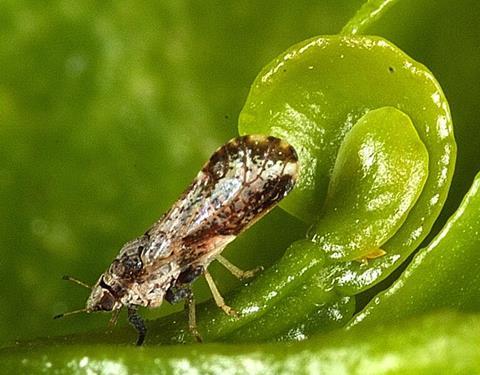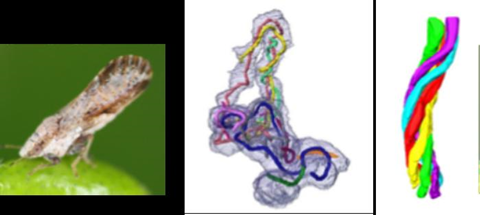A research team from Pusan National University, the National Institute for Physiological Sciences, Kobe University, and Toyohashi University of Technology has discovered a novel tubular structure, unlike anything previously seen in biology, within the symbiotic bacterium Candidatus Profftella armatura found in the Asian citrus psyllid (Diaphorina citri). The results of their research were published in Npj Imaging on September 18, 2025.

The Asian citrus psyllid is a significant agricultural pest that causes severe damage to citrus crops worldwide, leading to reduced yields and increased prices. This insect harbors Profftella, a vertically transmitted symbiotic bacterium considered essential for the host’s survival and known for producing toxic compounds that help repel natural enemies.
READ MORE: Compound produced by citrus pest’s symbiotic bacteria promotes in vitro protein synthesis
Using advanced 3D electron microscopy, the team revealed that Profftella cells, which are themselves extremely elongated, measuring up to over 100 micrometers in length, contain multiple elongated tubular structures each measuring tens of micrometers in length.
It was revealed that these tubes have a diameter of approximately 230 nm and are composed of 5 to 6 right-handed helical fibers forming a twisted structure. They were also found to occupy a consistent proportion of the Profftella cell volume.
“Typically, bacteria lack such complex organelles. Moreover, I was surprised to find that this tube is so stable and robust that it maintains its shape during high-vacuum electron microscopy observation without chemical fixation or embedding,” explains Assistant Professor Chihong Song from Pusan National University, the article’s first author.
Cellular machinery
Further analyses using various techniques, including optical microscopy, revealed that these tubes contain numerous ribosomes, the cellular machinery responsible for protein synthesis.

“Based on this, the tubes may be involved in protein synthesis. Given their sturdiness, they could also provide physical support to the elongated Profftella cells, and maybe even act like a scaffold for material transport—kind of like the cytoskeleton in eukaryotic cells,” says Associate Professor Atsushi Nakabachi from Toyohashi University of Technology, a corresponding author of the study.
The research team emphasizes that this structure represents an extremely rare example of an organelle found in bacteria. This significant discovery challenges the conventional view of bacteria as simple life forms and offers new insights into the evolution of cellular structures. At the same time, it opens promising avenues for developing selective pest control strategies targeting the Asian citrus psyllid, with important implications for agriculture.
Topics
- Agriculture
- Asia & Oceania
- Atsushi Nakabachi
- Bacteria
- Candidatus Profftella armatura
- Chihong Song
- Diaphorina citri
- Healthy Land
- Kobe University
- Microbiological Methods
- National Institute for Physiological Sciences
- organelles
- pest control
- Pusan National University
- Research News
- ribosomes
- symbiosis
- Toyohashi University of Technology







No comments yet